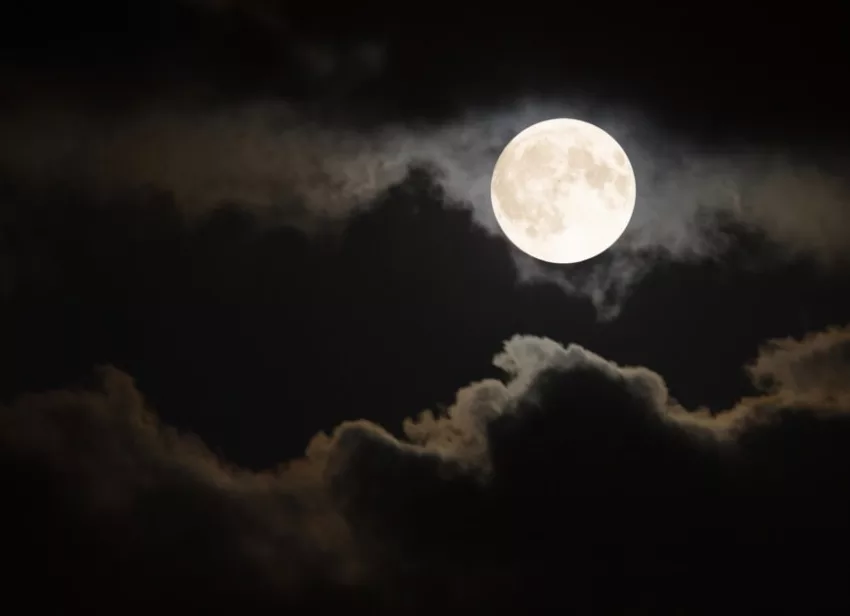The night sky is a fascinating sight to behold, filled with celestial objects that capture our imagination. The most prominent and noticeable of these objects is the Moon. It’s a celestial body that orbits around the Earth, and we often see it as a glowing white disk in the night sky. But is the Moon a planet? This is a question that has puzzled many people for years.
In this blog post, we will explore the characteristics of the Moon, compare it with planets, and provide evidence to answer this question.
Is the Moon a Planet? Here’s What You Need to Know
No, the Moon is not a planet. It is a natural satellite that orbits around the Earth. A planet, on the other hand, is a celestial body that orbits around a star, is spherical in shape, and has cleared its orbit of other debris and objects.
The Moon meets some of the criteria for being a planet, such as being spherical in shape, but it does not meet the criterion of having cleared its orbit. In fact, the Moon’s orbit is constantly affected by the gravitational pull of the Earth, as well as other celestial bodies like the sun and other planets.
In addition, the Moon is much smaller than the planets in our solar system and has a different composition. While planets are made up mostly of gas and rock, the Moon is primarily composed of rock and dust. So while the Moon may share some similarities with planets, it is not considered to be one.
Defining a Planet:
Before we delve into the question of whether the Moon is a planet, it’s essential to understand what a planet is. A planet is a celestial object that orbits around a star, has a spherical shape, and has cleared its orbit of debris.
There are eight planets in our solar system: Mercury, Venus, Earth, Mars, Jupiter, Saturn, Uranus, and Neptune. These planets are visible from Earth and have distinct characteristics that set them apart from other celestial objects.
Characteristics of the Moon
The Moon is a natural satellite that orbits around the Earth. It’s the fifth-largest moon in the solar system and the largest relative to its host planet. The Moon’s diameter is about one-quarter of Earth’s, and it’s approximately 238,855 miles away from Earth.
It’s also one of the brightest objects in the night sky and has a significant impact on Earth’s tides. The Moon doesn’t have an atmosphere, so it doesn’t have weather or air pressure. It also doesn’t have a magnetic field, which makes it vulnerable to solar winds.
Comparing the Moon with Planets:
When we compare the Moon with planets, we can see some significant differences. Unlike planets, the Moon doesn’t orbit around the Sun. It orbits around the Earth. It also doesn’t have a clear orbit. Instead, it shares its orbit with thousands of asteroids and other debris.
The Moon doesn’t have an atmosphere, so it can’t support life as we know it. Planets, on the other hand, have distinct atmospheres that support life and provide weather conditions.
Another critical difference is that the Moon doesn’t have its own source of light. It reflects sunlight and appears bright in the night sky. In contrast, planets emit light and have their own distinct characteristics that set them apart from other celestial objects.
For example, Jupiter is known for its Great Red Spot, a massive storm that has raged for centuries. Mars is known for its reddish appearance and polar ice caps.
Evidence Supporting that the Moon is Not a Planet:
There is a vast body of scientific evidence that supports the idea that the Moon is not a planet. One of the most compelling pieces of evidence is that the Moon doesn’t have a clear orbit. Planets, by definition, must have cleared their orbit of debris. The Moon shares its orbit with thousands of asteroids and other debris, which makes it unique among celestial objects.
Another piece of evidence is that the Moon doesn’t have an atmosphere. Planets, on the other hand, have distinct atmospheres that support life and provide weather conditions. The Moon’s lack of atmosphere makes it a barren and lifeless place.
Conclusion:
In conclusion, the Moon is not a planet. It’s a natural satellite that orbits around the Earth and shares its orbit with thousands of asteroids and other debris. The Moon doesn’t have an atmosphere, so it can’t support life as we know it.
While the Moon is a fascinating and significant celestial object, it’s not a planet. As we continue to explore the vastness of space, we will undoubtedly discover other celestial objects that capture our imagination and challenge our understanding of the universe.
- What is Epic Games Launcher and How to Install It? - July 15, 2024
- What Is Audius Music Streaming App and How Does it Work? - July 13, 2024
- The 10 Best Astronomy Apps for Stargazing - July 12, 2024





